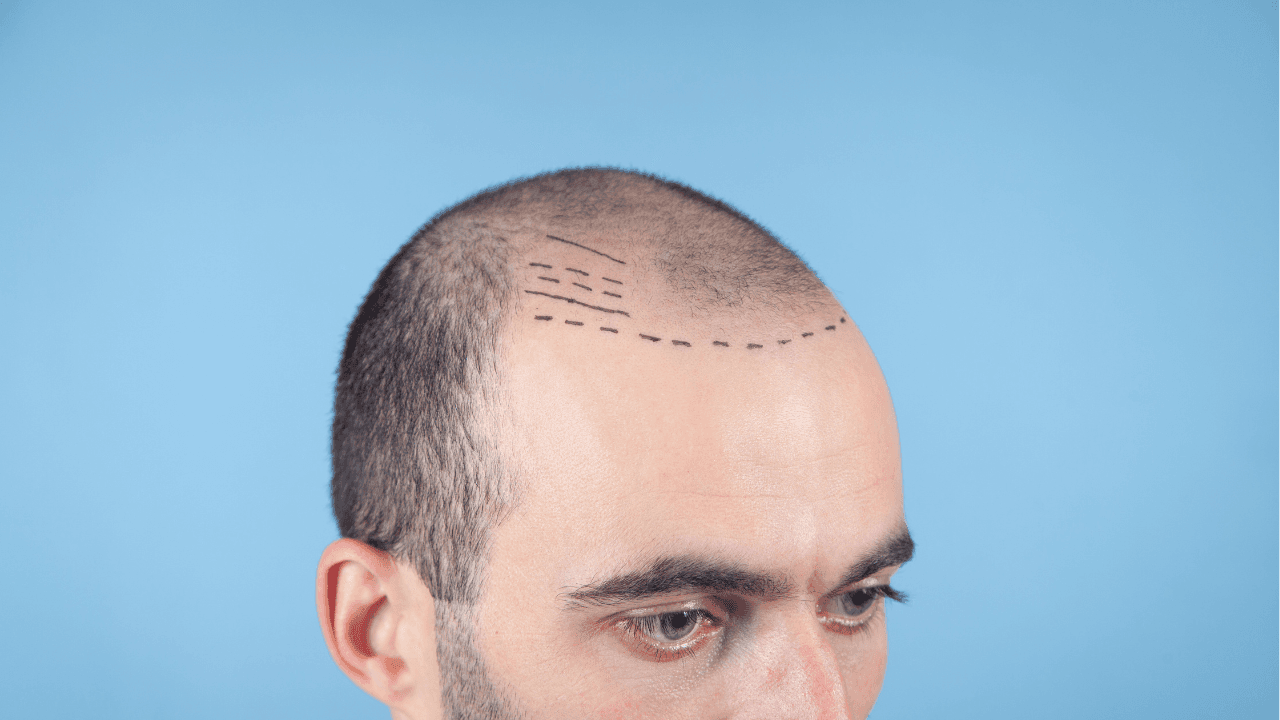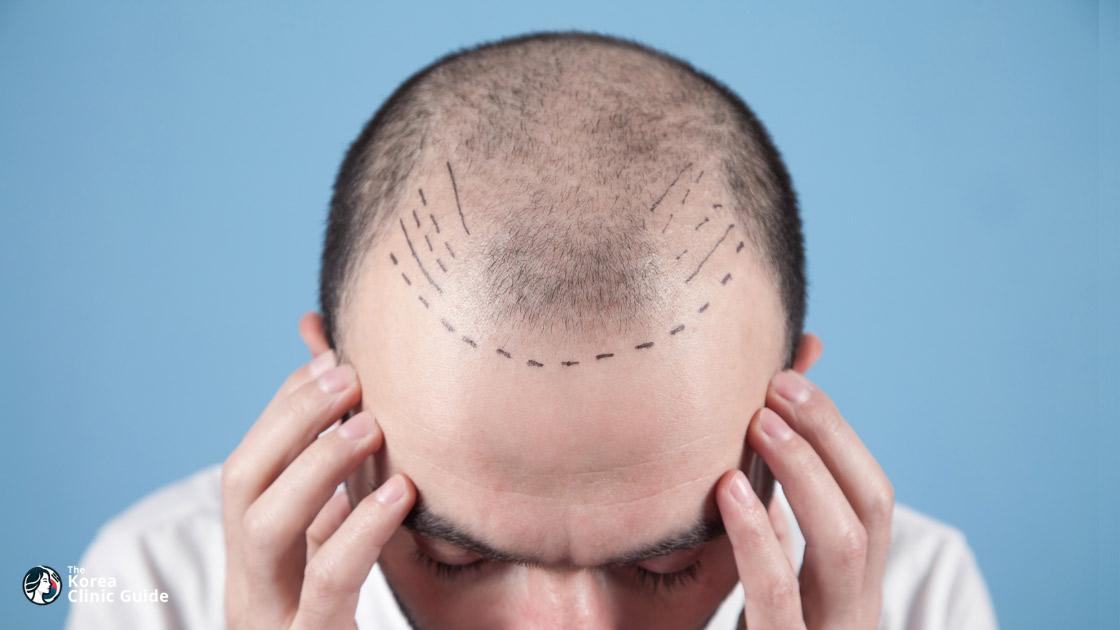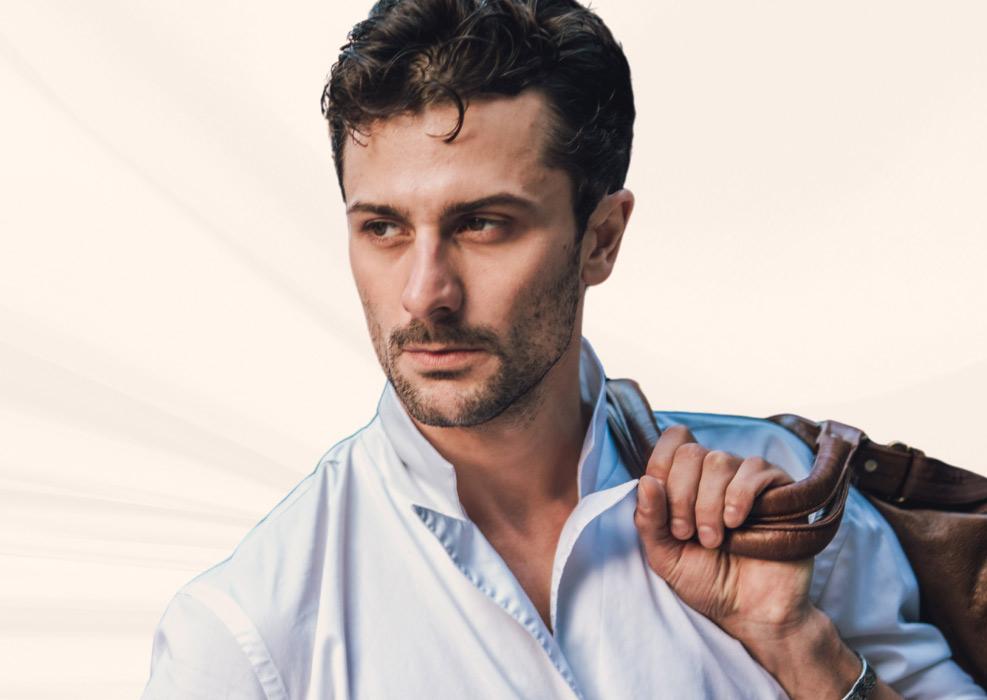Medical Tourism Blog
Hair transplant on Scar in Korea | Best Clinics, Costs, Procedure Types & More

Table of contents
- What Is Hair Transplant on Scar?
- Best Hair transplant on Scar Clinics in Korea
- Hair Transplant on Scar in Korea
- Alternatives to Hair Transplant on Scar
- Conclusion
Did you know that South Korea has become a global leader in hair restoration techniques, especially for areas affected by scarring? This article explores how advanced hair transplant procedures in Korea are offering hope to individuals looking to rejuvenate their scalp and confidence, making it a premier destination for medical tourism in this field.

What Is Hair Transplant on Scar?
Hair transplant on scar is a specialized medical procedure used to restore hair in areas where scarring has occurred on the scalp or other parts of the body. Whether resulting from surgery, trauma, burns, or conditions like traction alopecia, scars can lack hair due to damage to the underlying follicles or the skin's inability to regenerate hair in the affected area. This procedure offers a solution by transplanting healthy hair follicles into the scar tissue, fostering new hair growth and improving the appearance of the scarred region.

Who Can Benefit from the Procedure?
Individuals who can benefit from a hair transplant on scar include those with:
- Surgical Scars: Scars from previous hair restoration surgeries, like FUT (Follicular Unit Transplantation), or other medical procedures.
- Trauma or Injury: Accidents resulting in cuts, burns, or trauma might leave behind scarred areas that do not naturally support hair growth.
- Burn Victims: Individuals who suffered from severe burns that damaged the scalp or body hair.
- Scalp Conditions: Conditions such as traction alopecia, which is hair loss caused by tension on the hair, often due to certain hairstyles.
- People with Stable Hair Loss: Candidates should typically have stable hair loss conditions and enough healthy donor hair, usually harvested from the back or sides of the head.
Procedure Types
Two main types of hair transplant techniques are used to perform hair transplants on scars:
-
Follicular Unit Transplantation (FUT)
- This method involves removing a strip of skin from a healthy hair-bearing area, usually the back of the scalp, from which follicular units are extracted and then implanted into the scar tissue.
- The technique is effective for covering larger scars and when a greater number of follicles are needed.
-
Follicular Unit Extraction (FUE)
- FUE involves individually extracting follicles directly from the donor area using a punch tool and implanting them into the scar.
- This method is less invasive than FUT and leaves minimal scars in the donor area, making it suitable for patients who need fewer grafts or prioritize a quicker recovery.
Pros of Hair Transplant on Scar
- Improved Aesthetics: Provides a more natural appearance by improving hair density and coverage over scars, enhancing confidence and self-esteem.
- Permanent Solution: Once the transplanted hair follicles take root, they generally continue to grow successfully for a lifetime.
- Versatile Coverage: Can address scars from various causes, from surgical ones to trauma and burns on the scalp or other body parts.
- Customized Approach: Procedures can be tailored to the unique needs and conditions of the patient, allowing for personalized results.
Cons of Hair Transplant on Scar
- Variable Success Rate: Success depends on scar condition; thicker or deeply scarred areas may hinder follicle survival.
- Multiple Sessions: Some scars may require multiple procedures to achieve desired density or due to limited viable donor hair.
- Cost Considerations: The procedure can be costly, and the price can increase with the number of grafts needed.
- Recovery Time: Post-procedure recovery can involve several days to weeks for swelling and redness to subside, and shock loss may occur before new growth stabilizes.
Hair transplant on scar is a complex procedure best performed by experienced medical professionals specializing in hair restoration. Each candidate's case is unique, necessitating thorough consultation and assessment to determine the optimal approach and expected outcomes.
Best Hair transplant on Scar Clinics in Korea
Listed below are the best clinics in Korea:
| Clinic Name | Key Features | Special Techniques |
|---|---|---|
| Maxwell Hair Clinic | Premier destination for hair-transplant-on-scar, over 60,000 transplants, SCM Hair Serum | Follicular Unit Extraction (FUE), Follicular Unit Transplantation (FUT) |
| Seojin Plastic Surgery Clinic | Top 100 Good Doctors in Korea, large-scale transplants, personalized care | Line cut, no-cut, mixed approaches, PRP Hair Transplant |
| Okay Plastic Surgery Clinic | Transformative aesthetic care, personalized treatment plans, Hairline Center | Precision techniques for hair restoration, advanced technology |
Maxwell Hair Clinic
Maxwell Hair Clinic is renowned as the premier destination for hair-transplant-on-scar procedures in Korea, offering unparalleled expertise and cutting-edge treatments. Established in 2007, the clinic has solidified its reputation as a top-tier international hair restoration center, having successfully performed over 60,000 hair transplants. This impressive track record is complemented by the clinic's innovative SCM Hair Serum, now available in an upgraded formula for at-home use, which has garnered positive feedback for its enhanced effectiveness and ease of application. Under the leadership of Dr. Noh Yoon Woo, a distinguished figure in the field of hair restoration, Maxwell Hair Clinic provides personalized care and advanced surgical techniques, such as Follicular Unit Extraction (FUE) and Follicular Unit Transplantation (FUT), ensuring natural-looking results and high patient satisfaction. The clinic's commitment to excellence is further demonstrated by its continuous recognition as Korea's best clinic since 2011, making it the ideal choice for those seeking comprehensive and effective hair restoration solutions.
You can check out their website here: Maxwell Hair Clinic Website
Seojin Plastic Surgery Clinic
Seojin Plastic Surgery Clinic stands out as the premier destination for hair-transplant-on-scar procedures in Korea, thanks to its exceptional blend of expertise, innovation, and personalized care. Recognized as one of the Top 100 Good Doctors in Korea in 2022, Dr. Lee Hyungmin leads the clinic with over 16 years of experience and a track record of more than 2,100 successful hair transplant surgeries. The clinic offers a diverse range of surgical techniques, including line cut, no-cut, and mixed approaches, allowing for tailored solutions that many other clinics cannot provide. Seojin Clinic is capable of performing large-scale transplants of up to 10,000 hairs, ensuring comprehensive coverage even in challenging cases. Specialized services such as the Hairline Gradation Transplant and the use of a Cold Follicle Separation Room highlight the clinic's commitment to achieving natural-looking results and optimal follicle survival. The innovative PRP Hair Transplant technique further enhances graft survival and reduces inflammation, making it ideal for sensitive areas and international patients. With a focus on minimizing the "popping" phenomenon and offering transplants for special areas like beards and eyebrows, Seojin Clinic provides a holistic approach to hair restoration. As a one-doctor clinic, Dr. Lee Hyungmin ensures that each patient receives personalized, end-to-end care, reinforcing the clinic's reputation for excellence and patient satisfaction. Located in the heart of Gangnam, Seoul, Seojin Clinic is a sanctuary for those seeking to enhance their natural beauty through advanced cosmetic procedures.
You can check out their website here: Seojin Plastic Surgery Clinic Website
Okay Plastic Surgery Clinic
Okay Plastic Surgery Clinic in Korea is a leader in transformative aesthetic care, offering a comprehensive range of services that extend beyond traditional procedures. The clinic is dedicated to providing personalized treatment plans that cater to the unique needs and aspirations of each patient. With a focus on sincerity, precision, and individualized care, the clinic ensures that every patient receives a tailored solution that aligns with their personal goals. The clinic is led by a team of specialized professionals, including a renowned female plastic surgeon with extensive experience, who guide patients through a journey of personal transformation using cutting-edge medical techniques and a compassionate approach.
Among its diverse offerings, Okay Plastic Surgery Clinic specializes in hair transplant procedures, including those for scars, through its Hairline Center. This center employs precision techniques to restore hair growth in areas affected by thinning, baldness, or scarring, ensuring natural-looking results. The clinic's commitment to excellence is evident in its use of advanced technology and its focus on achieving optimal aesthetic outcomes for each patient. Whether addressing hairline corrections or providing comprehensive scar management solutions, Okay Plastic Surgery Clinic stands out as a premier destination for those seeking expert care and transformative results in Korea.
You can check out their website here: Okay Plastic Surgery Clinic Website
Hair Transplant on Scar in Korea
Traveling to Korea for a hair transplant on a scar is an experience that combines advanced medical care with the unique opportunity to explore a vibrant and culturally rich country. Korea has become a preeminent destination for medical tourists seeking hair transplantation due to its cutting-edge technology, skilled surgeons, and competitive pricing. Here’s what you can expect when coming to Korea for this specific procedure.
Choosing a Clinic
The first step in your journey is selecting a reputable clinic. Korean clinics are renowned for their excellence in aesthetic and reconstructive surgeries, particularly hair restoration. Patients are encouraged to research clinics thoroughly, considering factors like the surgeons' expertise, patient reviews, and before-and-after photos of previous procedures. Many clinics in Korea are well-accredited and follow international standards of care.
Consultation Process
Upon choosing a clinic, the next phase involves a detailed consultation either online or in-person. This initial meeting is crucial as it allows you to discuss the specific characteristics of the scar, the donor area's condition, and your treatment goals. The surgeon will typically evaluate the scar tissue, as its nature, location, and size can dramatically impact the procedure's approach and success rate. Korean surgeons provide personalized consultations and are renowned for their meticulous attention to detail.
The Procedure
The technique most commonly employed for hair transplants on scars is Follicular Unit Extraction (FUE). This minimally invasive method involves harvesting individual hair follicles from a donor area, often the back of the scalp, and transplanting them into the scar. Korea’s advanced FUE techniques minimize scarring and recovery time while ensuring a natural look. The procedure typically takes several hours, depending on the scar's size and the number of grafts needed. Patients often appreciate the efficiency and precision of the process in Korean clinics.
Recovery and Care
In Korea, post-operative care is emphasized strongly. Following the procedure, patients receive detailed instructions and products to aid healing and promote optimal results, such as special shampoos and topical treatments. Clinics may also offer aftercare packages that include follow-up visits to monitor progress.
The recovery period is generally smooth, with most patients able to return to normal activities within a week. The transplanted hairs fall out within several weeks post-surgery but regrow over several months, eventually blending seamlessly with existing hair.
Language and Cultural Experience
One of the pleasant surprises of visiting Korea for medical treatment is the chance to experience Korean culture. While the primary focus is on your medical care, many clinics have multilingual staff fluent in English, reducing language barriers. Clinics in major cities like Seoul go the extra mile to accommodate international patients, providing concierge services, virtual consultations, and guided tours of local attractions.
Furthermore, Korea is a fascinating blend of the ancient and modern, providing ample opportunity to explore historical palaces, bustling markets, and vibrant urban centers during your stay. Patients often find the recovery phase an ideal time to indulge in leisurely exploration, contributing positively to their overall experience.
Affordability and Convenience
Korea’s hair transplant surgeries are also known for their affordability compared to many Western countries without compromising quality. The combination of world-class facilities, experienced professionals, and lower costs makes Korea a compelling option for those considering a hair transplant on a scar. Comprehensive packages that include accommodation, transport, and procedure costs add to the convenience, allowing patients to plan efficiently without worrying about hidden expenses.
Traveling to Korea for a hair transplant on a scar involves marrying exceptional medical care with a fulfilling cultural journey, making it a memorable and beneficial experience for many.
Alternatives to Hair Transplant on Scar
1. Scalp Micropigmentation (SMP)
Scalp Micropigmentation (SMP) is a non-surgical, cosmetic procedure that involves injecting pigments into the scalp to mimic the appearance of hair follicles. This technique can effectively disguise scars by matching the pigment color to the individual's hair, creating an illusion of denser hair. Although the results are permanent, the color may not change naturally with time, such as when hair turns gray, potentially necessitating future touch-ups. SMP is particularly popular as it avoids the need for surgery and provides immediate visual improvements, though several sessions may be required based on the scar's size and severity.
2. Tricopigmentation (TMP)
Similar to SMP, Tricopigmentation (TMP) is a semi-permanent version of scalp micropigmentation. TMP involves injecting pigments into the upper layers of the skin, providing results that last anywhere from six months to three years. This temporary nature allows for adjustments in pigment as natural hair color changes. TMP offers a less invasive way to conceal scars, making it a suitable choice for individuals wary of permanent solutions. Additionally, it permits flexibility and adaptability to the person’s evolving hair and scalp condition.
3. Laser Therapy for Scar Reduction
Laser therapy is a method used to minimize the appearance of scars, which can be particularly beneficial in preparing scar tissue for potential further treatments like hair transplants. The therapy rejuvenates scarred skin by targeting the affected tissue, promoting collagen production, and improving skin elasticity. While not specifically designed for hair transplant scar treatment, laser therapy can help flatten and lighten scars, thus enhancing the overall appearance of the scalp. It is also used in conjunction with other methods like SMP or TMP to achieve more comprehensive aesthetic results. Effectiveness may vary from person to person, and consultation with a dermatologist can provide insights into its suitability.
Conclusion
In conclusion, hair transplant procedures on scars in Korea represent a cutting-edge solution for individuals seeking to restore both their hair and confidence. With Korea's reputation as a global leader in medical technology and cosmetic surgery, alongside its highly skilled professionals, patients are increasingly traveling to the country to take advantage of advanced, minimally invasive techniques that ensure natural-looking results. The meticulous attention to detail and innovation in Korean clinics have elevated the standard of care, offering hope to those affected by hair loss from scars. As the field continues to evolve, Korea's commitment to excellence and patient satisfaction remains steadfast, promising a brighter future for those seeking aesthetic restoration and personal rejuvenation.












